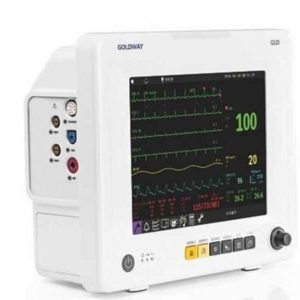Patient Monitor Full Price List (2023) – Buy in India
Patient monitors play a critical role in healthcare settings by allowing healthcare professionals to monitor a patient's vital signs continuously. This can help detect potential health problems early on and allow for timely interventions. Patient monitors can also help improve patient outcomes by ensuring that patients receive appropriate care based on their health status. With advances in technology, patient monitors are becoming increasingly sophisticated, allowing for more comprehensive monitoring and better patient care.
Patient Monitor Full Price List (2023) – Buy in India
-

 Add to cartQuick View
Add to cartQuick View -
-36%

 COD AvailableAdd to cartQuick View
COD AvailableAdd to cartQuick View -
-7%

 Add to cartQuick View
Add to cartQuick View -
-39%

 COD AvailableAdd to cartQuick View
COD AvailableAdd to cartQuick View -
-9%

 Add to cartQuick View
Add to cartQuick View
A patient monitor is a medical device used to monitor a patient’s vital signs, such as blood pressure, heart rate, respiratory rate, and oxygen saturation. It is often used in hospitals, clinics, and other healthcare settings to provide continuous monitoring of a patient’s health status.
Patient monitors can vary in complexity and features. Some monitors only measure one vital sign, such as blood pressure or oxygen saturation, while others can measure multiple vital signs simultaneously. Multi-parameter monitors are typically more expensive but provide more comprehensive monitoring.
Patient monitors can also vary in portability. Some monitors are designed to be portable, allowing them to be easily moved from room to room or even used in ambulances or other transport vehicles. Other monitors are designed for stationary use in a hospital or clinic setting.
Patient monitors typically feature a display where the patient’s vital signs can be viewed in real-time. Many monitors also include alarm systems that alert healthcare professionals if a patient’s vital signs fall outside of safe parameters.
Patient monitors are an essential tool for healthcare professionals, allowing them to quickly and accurately monitor a patient’s health status and provide timely interventions if necessary. They can help improve patient outcomes by allowing healthcare professionals to identify and address potential health problems early on.
Buyer’s Guide for Patient Monitors:
When looking for a patient monitor, there are several factors to consider. Here are some of the most important ones:
- Vital Signs: Patient monitors can measure various vital signs, including blood pressure, heart rate, respiratory rate, and oxygen saturation. Consider which vital signs you need to monitor for your patients.
- Display: The display is where you will view the patient’s vital signs. Consider the size and clarity of the display, as well as its adjustability options.
- Alarms: Patient monitors can sound alarms when vital signs fall outside of safe parameters. Consider the alarm options and how they can be customized to suit your needs.
- Portability: Some patient monitors are portable and can be moved from room to room. Consider whether you need a portable monitor or a stationary one.
- Connectivity: Patient monitors can be connected to other devices, such as electronic medical records (EMRs). Consider the connectivity options and whether they are compatible with your existing systems.
- Price: Finally, consider the price of the patient monitor and whether it fits your budget.
FAQs about Patient Monitors:
A patient monitor is a medical device used to monitor a patient’s vital signs, such as blood pressure, heart rate, respiratory rate, and oxygen saturation. It is often used in hospitals, clinics, and other healthcare settings.
Patient monitors are generally highly accurate, but their accuracy can be affected by various factors, such as patient movement, poor electrode placement, and equipment malfunction. Regular calibration and maintenance can help ensure accuracy.
Yes, there are patient monitors designed for home use, such as those used for monitoring blood pressure or oxygen saturation. However, it is important to consult with a healthcare professional before using a patient monitor at home.
To clean a patient monitor, follow the manufacturer’s instructions. Generally, you can use a disinfectant wipe or solution to clean the surfaces of the monitor, but avoid getting any liquid inside the device.
A single-parameter monitor measures only one vital sign, such as blood pressure or oxygen saturation. A multi-parameter monitor can measure multiple vital signs at once, such as blood pressure, heart rate, respiratory rate, and oxygen saturation. Multi-parameter monitors are more versatile but may be more expensive.








